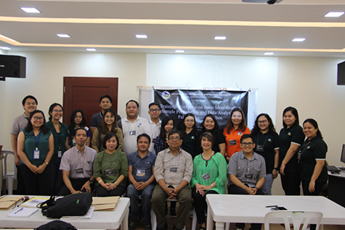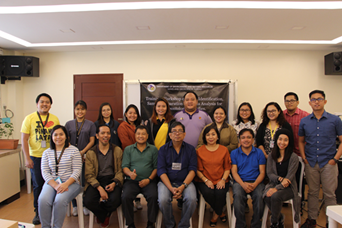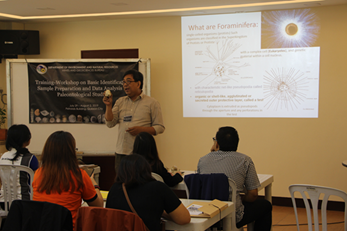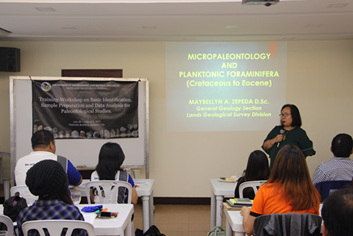Paleontology is one of the pillars of modern geology. The study of fossils and fossil record motivated the fields of stratigraphy, tectonics, and evolutionary biology. The boom of petroleum industry in the 1970’s and 1980’s further pushed the significance of paleontology in economic growth. In recent years, as we shifted the focus to environment and climate, fossil record reflects the impact of global environment and climate events to the demise and diversity of flora and fauna in the past.
The Mines and Geosciences Bureau (MGB) has been the frontrunner in paleontology with a pool of experts of wide variety of fossil groups. To encourage young geologists to work on fossils, the Geological Laboratory Services Section (GLSS) of the Lands Geological Survey Division (LGSD), MGB - Central Office conducted the “Training-Workshop on Basic Identification, Sample Preparation, and Data Analysis for Paleontological Studies”, which was attended by geologists from the MGB-CO and representatives from the Regional Offices (RO) I, VII, IX, and XII. The said training was held on July 29 – August 2, 2019 at the LGSD Multi-Purpose Room, PETROLAB Building, MGB Compound, Diliman, Quezon City.
The organizers invited two resource speakers, Dr. Leopoldo de Silva, Jr. and Dr. Maybellyn A. Zepeda to impart their expertise and knowledge on foraminifera and its uses to age dating and biostratigraphy. The first and second day of the training workshop were devoted to the basic concepts of micropaleontology as well as the morphology, identification, and significance to age dating of planktonic (floaters) and large benthic (bottom dwellers) foraminifera from Cretaceous to Recent. On the third day, participants were introduced to the sample preparation techniques for fossil samples including washing, polished block and thin section preparation.
This training-workshop aims to encourage young geologists to work on fossils, to impart basic knowledge and techniques on foraminiferal identification, and to prepare fossil specimen which will serve as standard reference material. Paleontological studies have been extremely useful in reconstructing paleoenvironmental and paleoclimatological conditions which are highly utilized in studying and establishing the geologic history of the Philippines. After these lectures, the participants worked on the microscopy techniques using their samples collected in the field as part of the Quadrangle Mapping Program. The participants were divided into three (3) groups to pick, identify, and date the fossils from the samples they collected during their geological mapping fieldwork. They were evaluated when they presented their data interpretation and outputs. The training ended with the presentation of certificates to the resource speakers and the participants.
By: Lands Geological Survey Division

The participants and resource speakers posed for a group photo

L: Dr. Leopoldo De Silva Jr. discussed the basic concepts and morphology of foraminifera
R: Dr. Maybellyn A. Zepeda gave a lecture about the micropaleontology of the Cretaceous Period
